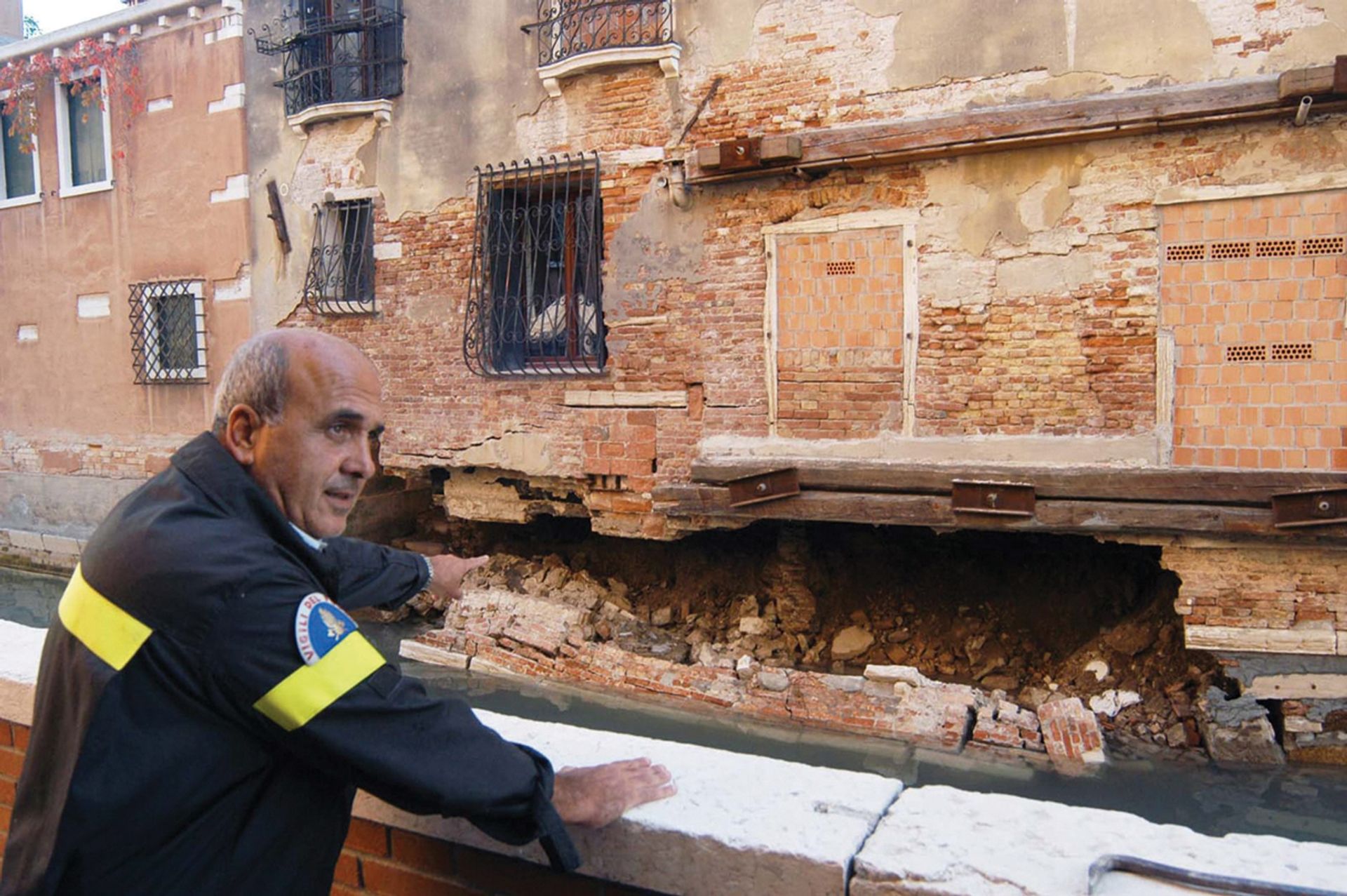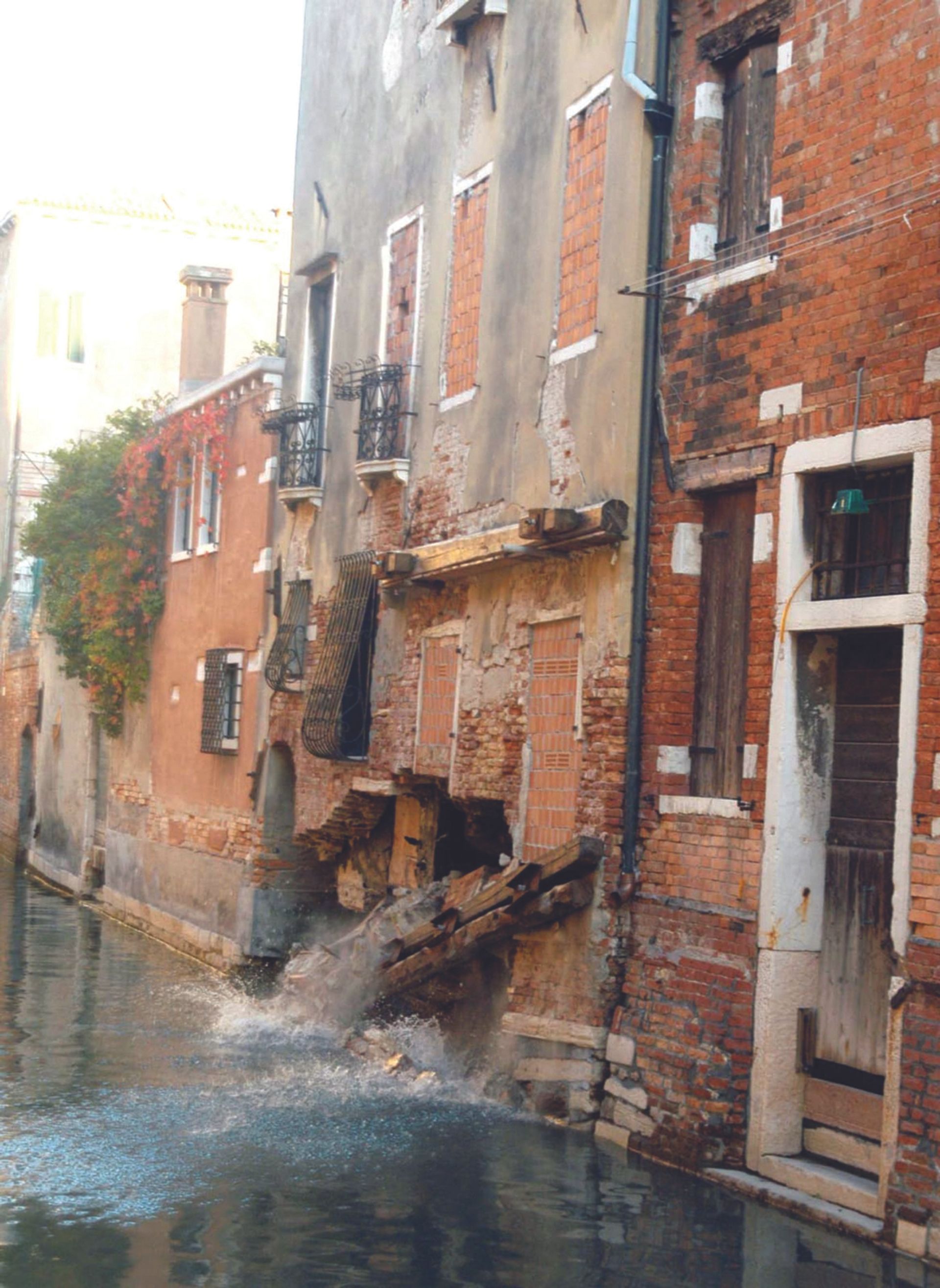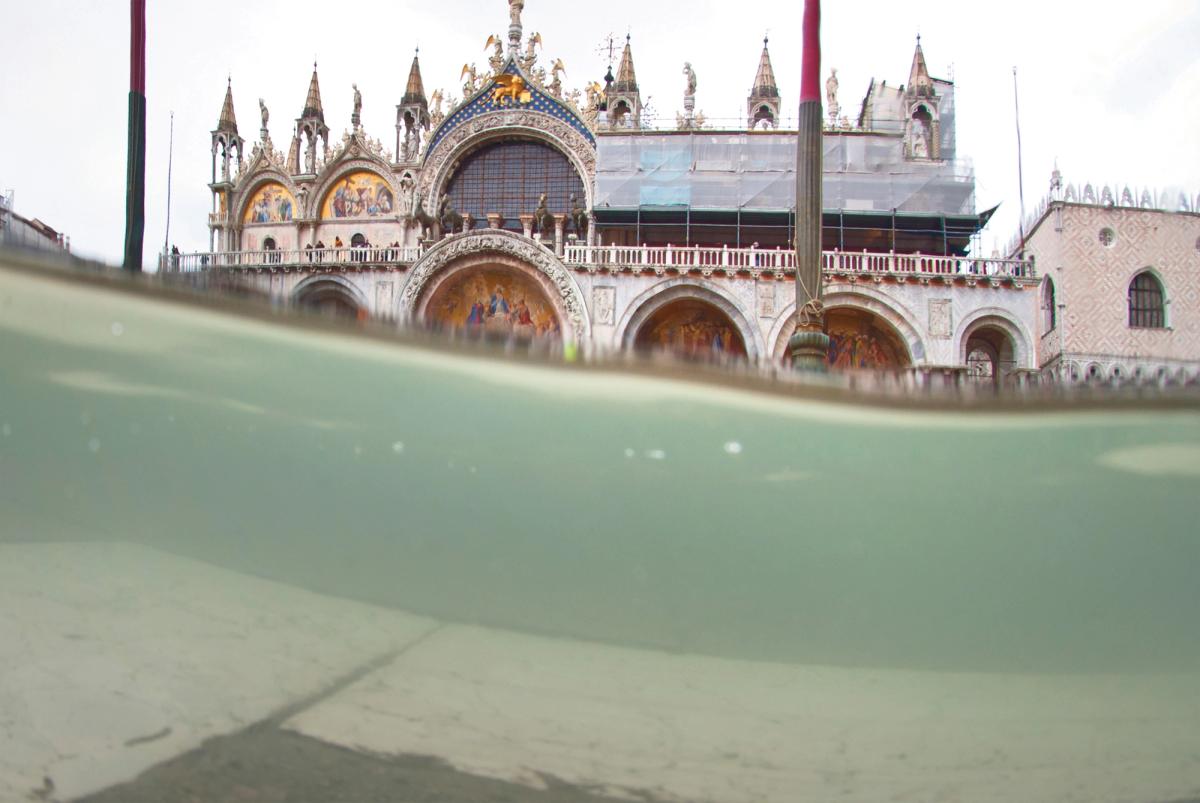This month, at the Unesco World Heritage Committee in Riyadh, Saudi Arabia (10-23 September), Italy can either accept Unesco’s recommendation that Venice be put on its endangered sites list, or it can scheme and plot against it to satisfy national pride and vested interests as it has done since 2014, the last time this measure was threatened.
If it agrees to listing, it will be a moment of truth, the acceptance of a simple fact, which is that sea level rise will destroy Venice by the end of the century unless a major national and international effort is made to save it. The city will crumble, bit by bit, as the relative water level rises about a metre by around 2100, mostly due to the sea-level rise of between 44cm and 76cm estimated by the highly authoritative Intergovernmental Panel on Climate Change in 2021, added to the natural subsidence of the Venice area.
But if Italy objects to listing, like an alcoholic in denial, it will once again have refused to recognise that it has a serious problem. It will also deal yet another blow to Unesco’s already fading credibility as a protector of the world’s heritage, which has been undermined by the member states themselves.

As the water rises to an unprecedented level, the brickwork will crumble and buildings that have stood solidly for centuries will collapse, as with this house in 2003 Matteo Tagliapietra
This goes back to the 1980s and 90s, when their representatives at the World Heritage Committee meetings ceased to be intellectuals, artists and architects, who believed in the ideal that the heritage of one country was the heritage of all, but were replaced by nationalistic diplomats. Their orders from government have been to defend their country’s prestige, which includes fending off any suggestion that they might not be looking after their precious heritage sites as they should.
If Italy objects to listing, like an alcoholic in denial, it will again have refused to recognise that it has a serious problem
As in the UN, political lobbying is fierce and alliances are formed, particularly with representatives of the Global South, who feel aggrieved that 51 of the 55 sites on the endangered list are in their part of the world, so they tend to reject Unesco’s recommendations. I saw how this worked at the 2016 meeting in Istanbul, where the Lebanese representative, Jad Tabet, an architect and one of the old-guard who remembered what Unesco once was, stubbornly insisted that the case of Venice should at least be debated. For his pains, he was lent on by the Lebanese foreign minister, under pressure from the Italian ambassador to stop Tabet causing trouble.

Collapses like this will become ever more frequent if nothing is done to control the chronically rising water level that is eating away at the buildings © Matteo Tagliapietra
The debate took place, nevertheless, but it was a farce. It was obvious that none of the speakers had read the highly critical report on Venice by Icomos (International Council on Monuments and Sites), which was buried among the 20,000 or so pages of documents for the meeting, and no one seemed to have any knowledge of the deep-rooted issues involved. For example, the Azerbaijani speaker said that Italy was famously good at restoring art, so obviously it would look after Venice well. The representatives duly voted not to put Venice on the endangered list, Unesco retreated and has only now rediscovered the courage to speak out.
Some of its criticisms are already in the 2014 warning shot, such as the town council’s total failure over many years to manage tourism and nurture the city as a diverse economy and thriving community.
No strategic thinking
The strength of the emphasis on climate change is new, however: “The combined effects of human-induced and natural changes (due to sea level rise, extreme weather events and other climate change-induced phenomena) are causing deterioration and damage to built structures and urban areas, and threaten the integrity of the cultural, environmental and landscape attributes and values of the property.”
There is no strategic thinking and coordinated management, Unesco says. But how can there be when responsibility for looking after Venice is divided between at least eight authorities, from the town council to the region, the province, various ministries in Rome, the commercial conglomerate that built the barriers and so on, not to mention very powerful commercial interests such as the port inside the lagoon at Marghera that exploit the weaknesses in the system in their favour? For example, the decision to raise the mobile barriers known as Mose at 110cm is in order to inconvenience ships aiming for the port as little as possible, but the heart of the city, St Mark’s Square, floods at 80cm, which has forced the procuratori of thebasilica, that masterpiece of Byzantine architecture, to take the matter into their own hands and build a glass barrier in front of it to prevent it from flooding dozens of times a year.
Italy’s latest report to Unesco has the nerve to claim this as one of its contributions to the protection of the city, when it just shows up a failure to sort out its priorities and face the reality that if it wants to have both the port and the city, it must have a viable, over-arching plan, not a succession of desperate and eventually ineffective ad hoc measures.
In fact, Unesco’s report repeatedly condemns Italy’s failure to produce an adequate plan for all the complicatedly intertwined aspects of Venice’s existence. It seems that it does not even take the trouble to stay in touch, or, as the report puts it, “It is of concern that the State Party [Italy] has not been communicating in a sustained and substantive manner with the World Heritage Centre between the last Committee session in 2021 and the submission of its state of conservation report in 2022, as requested by the Committee, and that it did not engage in consultation to developing the corrective measures.”
Venice has already been declared Europe’s most endangered heritage site by Europa Nostra, the influential pan-European citizens’ movement for the protection of its heritage, while the US-based not-for-profit World Monuments Fund has had Venice on its Watch List since 2014.
It might be the time for the Italian government also to admit what is obvious, which is that Venice is in danger. The world will applaud if the Italian government allows Venice to be listed now. It will be able to work with Unesco rather than against it and it will open itself up to global collaborations and financing.
After all, in 2009 the US actually asked for the Everglades National Park to be reinscribed on the endangered list at a moment of tension between the federal government and the state of Florida. The Everglades are now well on their way to being saved, to the satisfaction of both Democrats and Republicans, an example of collaboration that Italy might well imitate.
• Anna Somers Cocks was the chair of the Venice in Peril Fund, the British charity for the safeguarding of Venice, 1999-2012. She is the founding editor of The Art Newspaper


